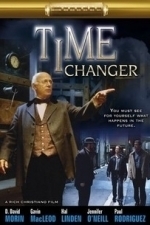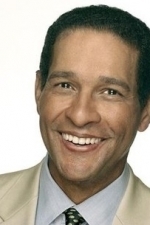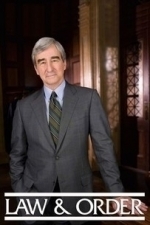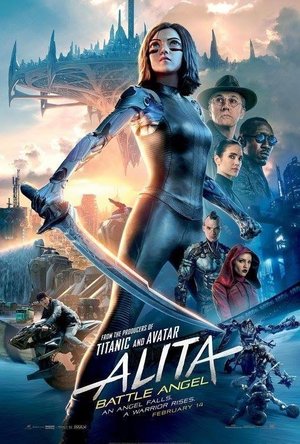Search
Rico Rodriguez
5 favorites
Movies & TV
Rico Rodriguez II or Rico Rodriguez is an American actor. He is best known for his role as Manny...
Hazel (1853 KP) rated Return to the Little Coffee Shop of Kabul (The Little Coffee Shop of Kabul #2) in Books
Dec 14, 2018
<i>I received this book for free through Goodreads First Reads.</i>
Five years since the publication of her fictional debut, fans of Deoborah Rodriguez will be pleased to know they can finally get their hands on the sequel: Return to the <i>Little Coffee Shop of Kabul</i>. In the first book (<i>The Little Coffee Shop of Kabul</i>) we are introduced to Sunny, a 38-year-old American, who has set up a coffee shop in the heart of Afghanistan. Now she has returned to the US, after the unfortunate death of her boyfriend, to a house on an island she did not really want. Meanwhile, her coffee shop struggles to continue in the hands of her Afghan friends.
The narrative alternates between the USA and Afghanistan, keeping the reader informed of two completely different scenarios. Sunny is dealing with the loss of Jack and her conflicted feelings over whether she should stay and live Jack’s dream lifestyle or return to her beloved Kabul. On the other hand, Yazmina and the others reveal to the reader how difficult and dangerous life is for the Afghanistan natives, especially for the women who have very little rights.
As well as the original characters, there are a number of new names introduced to the story. In Afghanistan a young girl is trying to escape an arranged marriage to an evil, rich man – something that has disastrous consequences for herself and her newfound friends. On the other side of the world, Layla, Yazmina’s sister, is experiencing Western culture living with Sunny, and is shocked at how friendly men and women are with each other.
Another new face to add to the mix is Kat, a young woman who escaped to America as a child and has turned her back on the traditions of Islam and the Afghan culture. Despite her growing friendship with Layla, she refuses to agree with Layla’s beliefs, particularly in regards to the <i>hijab</i>. Neither girl’s opinion is more valid than the other however, as they have both had completely different upbringings. Kat has spent the better part of her life relishing in the freedom of Western culture, whereas Layla finds comfort in her traditions.
<i>Return to the Little Coffee Shop of Kabul </i>contains a couple of powerful messages. Firstly, as Sunny realizes, you need to be thankful for what you have got and not assume that going back to a lifestyle you used to follow would be the same as it once was. On the flip side, the Muslim family in Kabul begins to learn that they do not have to put up with the strict, unfairness in the treatment of women, and can strive to do something about it.
It is not necessary to have read the previous book, as there is enough character description and history mentioned within the narrative for new readers to be able to follow along. It is also suitable for book groups as it contains a series of reading group questions at the end of the novel.
Despite its upsetting scenes,<i> Return to the Little Coffee Shop of Kabul </i>is essentially a happy book. The character Sunny, definitely lives up to her name; there is no over emphasis on any of the negative situations she or her friends find themselves in. In a world where it would be easy to fall into despair, Rodriguez has written a story with a positive outlook on life and hope for the future.
Five years since the publication of her fictional debut, fans of Deoborah Rodriguez will be pleased to know they can finally get their hands on the sequel: Return to the <i>Little Coffee Shop of Kabul</i>. In the first book (<i>The Little Coffee Shop of Kabul</i>) we are introduced to Sunny, a 38-year-old American, who has set up a coffee shop in the heart of Afghanistan. Now she has returned to the US, after the unfortunate death of her boyfriend, to a house on an island she did not really want. Meanwhile, her coffee shop struggles to continue in the hands of her Afghan friends.
The narrative alternates between the USA and Afghanistan, keeping the reader informed of two completely different scenarios. Sunny is dealing with the loss of Jack and her conflicted feelings over whether she should stay and live Jack’s dream lifestyle or return to her beloved Kabul. On the other hand, Yazmina and the others reveal to the reader how difficult and dangerous life is for the Afghanistan natives, especially for the women who have very little rights.
As well as the original characters, there are a number of new names introduced to the story. In Afghanistan a young girl is trying to escape an arranged marriage to an evil, rich man – something that has disastrous consequences for herself and her newfound friends. On the other side of the world, Layla, Yazmina’s sister, is experiencing Western culture living with Sunny, and is shocked at how friendly men and women are with each other.
Another new face to add to the mix is Kat, a young woman who escaped to America as a child and has turned her back on the traditions of Islam and the Afghan culture. Despite her growing friendship with Layla, she refuses to agree with Layla’s beliefs, particularly in regards to the <i>hijab</i>. Neither girl’s opinion is more valid than the other however, as they have both had completely different upbringings. Kat has spent the better part of her life relishing in the freedom of Western culture, whereas Layla finds comfort in her traditions.
<i>Return to the Little Coffee Shop of Kabul </i>contains a couple of powerful messages. Firstly, as Sunny realizes, you need to be thankful for what you have got and not assume that going back to a lifestyle you used to follow would be the same as it once was. On the flip side, the Muslim family in Kabul begins to learn that they do not have to put up with the strict, unfairness in the treatment of women, and can strive to do something about it.
It is not necessary to have read the previous book, as there is enough character description and history mentioned within the narrative for new readers to be able to follow along. It is also suitable for book groups as it contains a series of reading group questions at the end of the novel.
Despite its upsetting scenes,<i> Return to the Little Coffee Shop of Kabul </i>is essentially a happy book. The character Sunny, definitely lives up to her name; there is no over emphasis on any of the negative situations she or her friends find themselves in. In a world where it would be easy to fall into despair, Rodriguez has written a story with a positive outlook on life and hope for the future.
Lee (2222 KP) rated Alita: Battle Angel (2019) in Movies
Feb 8, 2019 (Updated Feb 8, 2019)
The Visuals (1 more)
Alita
A lot of big names, overqualified and underutilised (1 more)
Clunky dialogue and pacing issues
All style, not much substance
James Cameron has spent more than a decade trying to bring Alita: Battle Angel to the big screen. Based on a popular cyberpunk manga series by Yukito Kishiro, published between 1990-1995, he has spent that time refining the script and developing the world that Alita inhabits. And that’s pretty much what he now spends most of his time taking care of with the Avatar movies and the world of Pandora. Hence the reason why he eventually decided to step back into producer duties for this movie, letting Robert Rodriguez pick up the directing reins in order to finally get it finished. Rodriguez uses much of the script that Cameron wrote, but brings a little bit of his trademark style to the table too.
It’s 2563, and we’re in Iron City. Dr Dyson Ido (Christoph Waltz) is scavenging among a huge scrapyard, looking for cyborg spare parts that he can make use of, while fresh metal and rubbish rains down from Zalem – a man-made, floating city sitting in the sky above Iron City. 300 years ago there were many of these floating cities but following a brutal war all of them except for Zalem perished. During that time though, the elevator leading up to Zalem was destroyed, and these days only the ‘pure’ inhabitants of Zalem are permitted there. Nobody from Earth is allowed to visit and if anyone comes down from Zalem, they’re not allowed back. It’s to try and avoid any contamination from entering Zalem. If you’ve seen the Matt Damon movie Elysium… well, then it’s a bit like that really.
Among the usual items, such as robotic hands and eyeballs, Dr Ido discovers Alita, or rather the core of Alita – lying lifeless and broken, with only a battered hairless head and upper torso remaining. He takes her back to his laboratory/home, where he works as a cybernetics expert, repairing and upgrading the inhabitants of Iron City who are either cyborgs or humans with cyborg body parts. Along with his assisting nurse, and using a robotic body that had been previously built for his now deceased daughter (this gets briefly explained later), they rebuild her, giving her the name Alita (also his daughters name). Alita awakens later in a nice comfortable bed, in what was presumably Dr Ido’s daughters room. She has no memory of her previous existence and sets about experiencing all the sights, sensations and tastes that human life and Iron City has to offer, exploring and striking up a friendship with local boy Hugo and his group of friends. But, as the name of the movie implies, this cyborg was built for battle, and it’s not long before Alita begins to remember who exactly she used to be and just how good at kicking ass she is.
A quick word about the visuals, as they are by far the best thing about this movie. Iron City, despite clearly being a futuristic world, is certainly not dark or bleak looking in the way we’re used to with similar movies of this genre. Many of the early scenes take place during daylight hours and the city is a vibrant, bright, bustling home to thousand of humans and cyborgs. We get to go beyond the limits of Iron City – the city walls, out to the badlands beyond, and as you’d expect from Cameron a lot of thought and detail has gone into mapping out and building this world. The cyborgs and the other robots we meet are all pretty standard for a movie of this kind, but it’s Alita that is the most impressive. Much of this is down to the incredible CGI involved in making her look as realistic as she does, but a lot of what makes her so enjoyable and believable is down to Rosa Salazar, whose motion captured performance helps bring her to life. The visuals are obviously at their most impressive during the battle scenes involving Alita – where so many movies with heavy CGI battles end up as just a messy whirlpool of characters and action, that’s certainly not the case here. Slick, inventive and exhilarating choreography allowing you to actually track and follow every single character and action in crisp detail. It’s refreshing and impressive, even more so when watched in 3D and particularly so during the fast paced Motorball scenes featured towards the end of the movie.
Outside of the visuals though, other characters and plot lines don’t seem to stick so well, which is disappointing considering the rich source material available to the film makers. Alita: Battle Angel suffers from inconsistent pacing, dialogue that is clunky and exposition-heavy and there are many times when the accompanying soundtrack just felt distracting to me, out of place with whatever is currently happening. Christoph Waltz, Mahershala Ali and Jennifer Connolly all seem overqualified and underutilised, and the romance between Alita and Hugo is unnecessary, and at times annoying. It feels like it’s trying to cram too much story into its two hour run time, resulting in plot holes and frustrations later on. And there is even a cliffhanger ending – frustrating in that it feels as though we haven’t even properly concluded this part of the story and we’re now being left to wait should a sequel ever be given the go ahead.
I found much to enjoy with Alita: Battle Angel, and would gladly go see a sequel or two, should they get made. It’s enjoyable at times, and dazzling to look at, but overall it did leave me feeling a little bit frustrated and disappointed.
It’s 2563, and we’re in Iron City. Dr Dyson Ido (Christoph Waltz) is scavenging among a huge scrapyard, looking for cyborg spare parts that he can make use of, while fresh metal and rubbish rains down from Zalem – a man-made, floating city sitting in the sky above Iron City. 300 years ago there were many of these floating cities but following a brutal war all of them except for Zalem perished. During that time though, the elevator leading up to Zalem was destroyed, and these days only the ‘pure’ inhabitants of Zalem are permitted there. Nobody from Earth is allowed to visit and if anyone comes down from Zalem, they’re not allowed back. It’s to try and avoid any contamination from entering Zalem. If you’ve seen the Matt Damon movie Elysium… well, then it’s a bit like that really.
Among the usual items, such as robotic hands and eyeballs, Dr Ido discovers Alita, or rather the core of Alita – lying lifeless and broken, with only a battered hairless head and upper torso remaining. He takes her back to his laboratory/home, where he works as a cybernetics expert, repairing and upgrading the inhabitants of Iron City who are either cyborgs or humans with cyborg body parts. Along with his assisting nurse, and using a robotic body that had been previously built for his now deceased daughter (this gets briefly explained later), they rebuild her, giving her the name Alita (also his daughters name). Alita awakens later in a nice comfortable bed, in what was presumably Dr Ido’s daughters room. She has no memory of her previous existence and sets about experiencing all the sights, sensations and tastes that human life and Iron City has to offer, exploring and striking up a friendship with local boy Hugo and his group of friends. But, as the name of the movie implies, this cyborg was built for battle, and it’s not long before Alita begins to remember who exactly she used to be and just how good at kicking ass she is.
A quick word about the visuals, as they are by far the best thing about this movie. Iron City, despite clearly being a futuristic world, is certainly not dark or bleak looking in the way we’re used to with similar movies of this genre. Many of the early scenes take place during daylight hours and the city is a vibrant, bright, bustling home to thousand of humans and cyborgs. We get to go beyond the limits of Iron City – the city walls, out to the badlands beyond, and as you’d expect from Cameron a lot of thought and detail has gone into mapping out and building this world. The cyborgs and the other robots we meet are all pretty standard for a movie of this kind, but it’s Alita that is the most impressive. Much of this is down to the incredible CGI involved in making her look as realistic as she does, but a lot of what makes her so enjoyable and believable is down to Rosa Salazar, whose motion captured performance helps bring her to life. The visuals are obviously at their most impressive during the battle scenes involving Alita – where so many movies with heavy CGI battles end up as just a messy whirlpool of characters and action, that’s certainly not the case here. Slick, inventive and exhilarating choreography allowing you to actually track and follow every single character and action in crisp detail. It’s refreshing and impressive, even more so when watched in 3D and particularly so during the fast paced Motorball scenes featured towards the end of the movie.
Outside of the visuals though, other characters and plot lines don’t seem to stick so well, which is disappointing considering the rich source material available to the film makers. Alita: Battle Angel suffers from inconsistent pacing, dialogue that is clunky and exposition-heavy and there are many times when the accompanying soundtrack just felt distracting to me, out of place with whatever is currently happening. Christoph Waltz, Mahershala Ali and Jennifer Connolly all seem overqualified and underutilised, and the romance between Alita and Hugo is unnecessary, and at times annoying. It feels like it’s trying to cram too much story into its two hour run time, resulting in plot holes and frustrations later on. And there is even a cliffhanger ending – frustrating in that it feels as though we haven’t even properly concluded this part of the story and we’re now being left to wait should a sequel ever be given the go ahead.
I found much to enjoy with Alita: Battle Angel, and would gladly go see a sequel or two, should they get made. It’s enjoyable at times, and dazzling to look at, but overall it did leave me feeling a little bit frustrated and disappointed.





